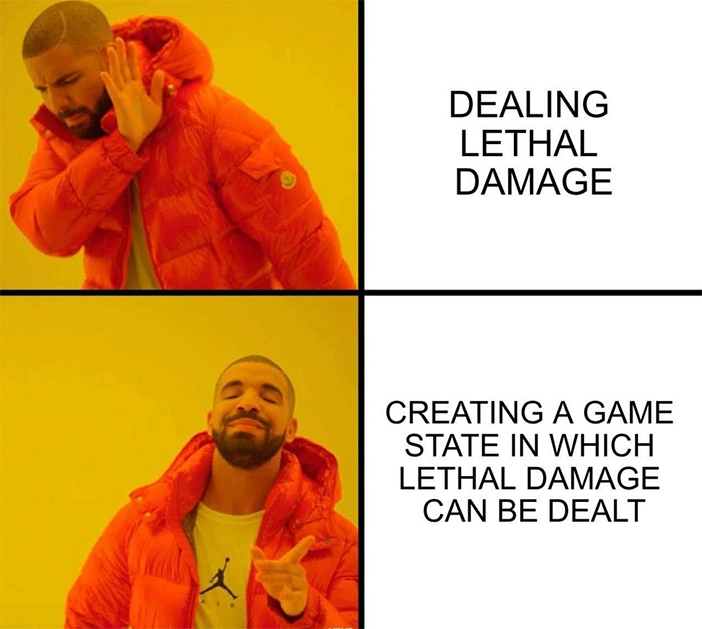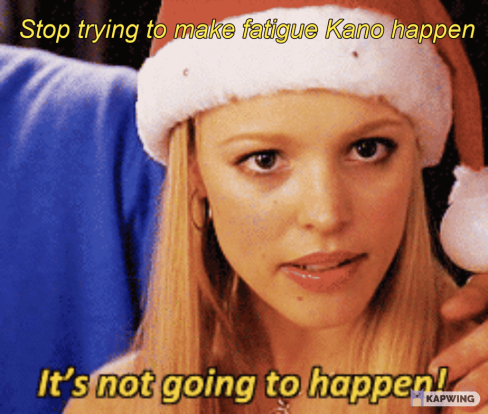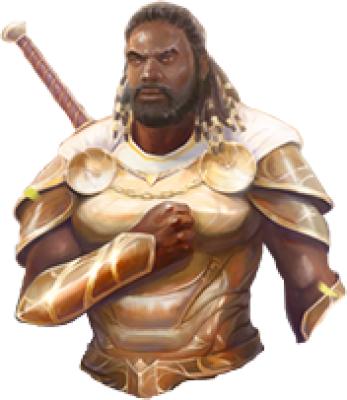One of my early positive impressions of Flesh and Blood was how elegantly the game handled the "First Player Advantage" problem of game design. In most games, it is generally acknowledged that the player who goes first has an advantage. However, because of the way defense is designed in this game- blocking with cards from hand- and the decision to allow the second player to draw a full hand after defending on the first turn, most FaB players soon learn that going first is not a static advantage. Instead, it's a game-time decision. What can be less obvious, however, are the factors that influence why this is the case, and what decision is the right one.
Game after game, as I sat across from my opponent, I would find myself constantly questioning whether I should go first or second. I was lacking a vocabulary for articulating the factors that went into the choice. I started to learn hero-centric axioms to help me decide, like "Bravo always wants to go first because he can get an aura out or maybe push through some dominate damage." While principles like that are built on valid reasoning, they leave a great deal unsaid. They also didn't help me know what to do the first time I tried to play an unfamiliar hero. I wanted to discover the "atomic" elements that influence the decision. I wanted to be a better player.
Lenses Can Help Us See
It's better to have an evergreen mental framework to help improve our decision making - one that is based on the underlying game factors, rather than simply memorizing static "hero-based" axioms like "Viserai always wants to go first." Perhaps he usually does, but being able to articulate the universal factors that influence that decision will help us become better players and adapt to a constantly evolving game.
When dealing in complex environments (like games!), the idea of "lenses" can be very helpful when trying to navigate the correct decision. A lens is really just a perspective - an opinionated perspective - that encourages us to ask questions about the thing we're observing, helping us to see things from different angles. This nomenclature comes from Jesse Schell's excellent book The Art of Game Design: A Book of Lenses, in which he explores 100 different lenses that game designers can use to examine their game, see it from new perspectives, and help inform ways in which they can improve it.
No single lens provides a definitive answer in and of itself, but rather seeks to provoke curiosity. Nor do the lenses themselves carry inherent weight in determining how important one factor is compared to another. They are simply tools to help inform our decision making. The skill in using and properly weighing them is born from experience, forged in the crucible of war- er, practice. It will take time.
Underlying Assumptions
Before getting to the lenses, I want to enumerate three critical underlying assumptions I'm operating from. Each of the lenses assumes knowledge of these factors, so we'll start there first.
1. Tempo! Tempo! We Want Tempo!
Tempo is the grail we seek. This is true of all CCGs, really. Tempo really just means "momentum" - which player is seeing the game unfold according to their plans? That player has the tempo. Beginners may confuse life total with tempo, but life total usually has very little to do with tempo (more on that in a moment)!
In Flesh and Blood, going second gives you the first chance at claiming tempo. This is when the "real" game starts, and any cards used to defend will not be redrawn. In fact, some people refer to the second turn of the game as Turn 1, preferring to call the first player's turn "Turn 0." I find that framing helpful and will use it for the rest of this article.
Going second gives you the first chance at claiming tempo... this is when the 'real' game starts.
It's worth noting that, while tempo is generally viewed as an aggressor's advantage (the aggressor being whoever is pressuring the opponent by attacking), that's not the whole story. As anyone who has faced off against a fatigue Oldhim can attest, just because you're emptying Oldhim's hand every turn and he's not counterattacking does not mean that you have the tempo. As you watch all your best attacks fall harmlessly into your graveyard, never to be seen again, and Oldhim prevents laughable amounts of damage, pitching his way into a better future state with a cold and calculating smirk creeping across his face, you may feel a cold shudder crawl down your spine; you may question who really has the momentum. Watching a OTK (one turn kill) Viserai pass the 20 mark on Runechants will also make you question who has the tempo, regardless of current life totals.
So, we acknowledge that we want to control the tempo of the game. Going second will usually give us the best chance at doing that. But there are still other factors to consider.
2. Storing Value is a Huge Advantage- but at what cost?
Flesh and Blood differs from most CCGs in the sense that, at least comparatively, the board states are less complex, with fewer persistent cards that affect the game state out on the board at once. Turn after turn, the decision making is focused on the cards in your hand, the equipment available to each player, and whatever's currently happening on the combat chain. So whenever you are able to store value via things like your arsenal, persistent auras, items, or equipment effects (such as Fyendal's Spring Tunic, Tectonic Plating, or Grasp of the Arknight), the benefits can be game-altering. Of course, nothing happens for free, and storing value always comes with an opportunity cost. You want to ensure that the payoff is worth it.
In Flesh and Blood, decision making is focused on the cards in your hand, the equipment available to each player, and whatever's currently happening on the combat chain. So whenever you're able to store value... the benefits can be game-altering.
In Flesh and Blood, going first allows you to store value before your opponent, creating advantage. For deck strategies that are trying to "build up" something, or play a longer game, going first is generally going to give you the best chance at doing that. Dash, Prism, and Bravo are good examples of this. Dash wants to load her pistol and get some items out. Prism wants to create auras and shields. Bravo wants to activate Tectonic Plating or drop an aura that will make his next turn explosive. And, of course, every hero benefits from a good card in their arsenal.
The first turn tempts us to store value. At the most basic level, you can always arsenal a card, right? You may even be able to play a powerful aura or item and arsenal a card, all while denying your opponent the ability to "mulligan" by not even attacking! So, is that the right decision? Is the opportunity cost worth it? Looking through the lenses will help us answer these questions.
3. Damage isn't everything; life is just a resource
Amateur CCG players tend to overemphasize the importance of life total. They are told that the win condition of the game is to get your opponent's life total to zero, so they hastily begin trying to always prevent damage to themselves and deal as much damage as possible to the opponent every turn. What veterans understand is that this approach neglects the importance of board state (stored value) and tempo. Creating board state and capturing tempo creates incremental advantage, facilitating future insurance that you are actually able to deal lethal damage and win the game. As the decades-old MTG adage goes, "Life is just a resource." So it is in Flesh and Blood.
While it's true that you win the game by dealing lethal damage, it's more helpful to view your objective as creating a game state by which you are able to deal lethal damage, while simultaneously ensuring your opponent cannot.
How does this relate to going first? If the objective is to get your opponent's life total to zero, then having the "first crack" at being able to do that, at least on the surface, seems like an advantage. In many games, it is. While it's true that you win the game by dealing lethal damage, it's more helpful to view your objective as creating a game state by which you are able to deal lethal damage, while simultaneously ensuring your opponent cannot. This seems obvious when said aloud, but it can be easy to lose sight of that throughout the game when you draw a juicy combo piece or are left with a weak hand after blocking. We must always be asking ourselves: "How do I win the game? How do I win the game?" The answer to that question is a shifting, turn-by-turn evaluation.

As an example, let's say you're able to push 10 damage through on Turn 0 by going first. That seems pretty good, especially in Blitz! But if, after that first turn, your opponent captures the tempo, forcing repeated blocks from your hand, never relenting in pressure, it's possible you may never get to deal damage again. It's possible you may lose the game. Your 10 damage was meaningless.
So, in short, we acknowledge that the goal of your turn is not solely to deal as much damage as possible. Rather, it is to create a sustainable environment where winning the game is possible. Indeed, life is just a resource. Until it's 0, you haven't won or lost.
The Lenses
At last, we get to the lenses. I'm going to list them in the order that I typically "run them through" in my brain, but again, these are not weighted. It's possible that one of the lenses may reveal a truth that is enough to cancel out all the other lenses' considerations. Let's get to it.
The Lens of Linear Strategy
This is perhaps always the place to start, the first lens to use. To use it, ask yourself: "Ignoring all other factors, what is my deck trying to do?" If your deck got to do everything it wanted to do, unimpeded by your opponent's plans, would it be more valuable to "build up" (go first) or capture the tempo and put the opponent on their heels (go second)?
The general rule of thumb is that if you are playing an aggressive deck, you will want to go second, because you believe that the chance to get first crack at tempo is more valuable than having a chance to build up. You will deal more damage than they will, faster than they can, and thus, you will win – or so you believe.
Knowing what your deck optimally wants to do is essential, but this single lens is usually not enough to make a decision. After all, in a well-balanced game, the idea of a linear strategy is a fantasy. Your opponent is going to mess up your plans. You need to consider other factors. You need to be less selfish! You need to think about your opponent, too!
The Lens of Opposition
This lens asks us to view the game from the perspective of our opponent. "Would my opponent prefer to go first? What is their linear strategy? How valuable would it be to deny them that opportunity? How dangerous is it to give them what they want? Is denying them what they want more valuable than giving myself what I want?"
Thinking like your opponent is essential to using this lens well. What will your opponent likely do if you let them go first (or vice versa), and could you somehow use that to your advantage? Thinking like your opponent is one of the most valuable skills you can hone.
If we're playing against an unfamiliar deck, this is hidden information to some extent. To mitigate the uncertainty, it's helpful to consider the current meta of the game. If you know "what's hot right now," you can assume that your opponent is playing to those ends. However, especially in more casual environments, the metagame is a constantly shifting, living entity, and there will always be players who buck the pattern, trying to play something unexpected, insisting on novel strategies or surprising builds. You may think you're playing against a tried and true combo Kano, but rest assured there's a court jester out there somewhere who's trying to make fatigue Kano work. Watch out!

More realistically, you may find yourself facing off against Dash. She could be playing a defensive pistol build, or she might be running a hyper-aggro boost deck. You won't always know what you're up against. If your opponent is playing defensive pistols, they'll very likely want to go first, loading their pistol, finding a powerful item, and putting a defense reaction into their arsenal. They don't even need to attack you! Perhaps we want to go first to deny them such a large advantage. Then again, if they're playing Boost aggro, they'd love nothing more than to go second and capture tempo with savage aggression.
Tricky stuff.
The Lens of the Mulligan
To use this lens, think about how beneficial the opportunity to "mulligan" cards in your hand (by defending against a Turn 0 attack with them) would be to you or your opponent. Ask questions like:
- "If my opponent goes first, are they likely to attack at all? Will they even give me an opportunity to mulligan by defending?"
- "If I go first, should I abstain from attacking and prevent my opponent a chance to block and redraw? How might I do that while still gaining advantage myself?"
- "What is the likelihood of drawing a clumsy hand?"
Elemental decks hoping to find a powerful fuse effect, Rangers who run the risk of not drawing an arrow, or Kassai lacking a card to give her Go Again – these are all decks that would love to block with their less effective cards in hand, hoping for a chance at a better redraw. If you're going to bother attacking the opponent and giving them a chance at a mulligan, you'd better be gaining a benefit that fits into your deck's linear strategy. And remember, even if you get a bit of damage through, damage isn't everything. Consider carefully.
So far, using these three lenses, we now know what we're trying to do, we've deeply considered what our opponent is trying to do, and we've considered how a chance at a mulligan may help or hinder our plans. Now what? Now we must synthesize these factors into a new perspective.
The Lens of Matchup
To use this lens, think about the full picture: your deck's linear strategy, your opponent's linear strategy, and the potential to deny your opponent their preference. Ask yourself questions such as:
- "Given my goals, and my opponent's goals, who benefits the most from going first?"
- "If denying my opponent what they want is more valuable than getting what I want, how might I pivot from my default strategy to make the most of it?"
For example, say you're playing Dorinthea against Rhinar. It's difficult for Dorinthea to get a hit through on Turn 0 because Rhinar can just lay down 3-4 cards in defense, very likely blocking the damage, regardless of Dorinthea's nasty attack reactions. Not only that, but Rhinar will get a potentially helpful mulligan all at the same time. Blocking Dorinthea's first Dawnblade swing shuts down her whole turn, regardless of any go again she has, so Dorinthea typically wants to go second (Lens of Linear Strategy) instead. She'd prefer to grab tempo, threatening to build counters at the cost of the opponent's hand, and then keep the pressure up for the rest of the game.
But Rhinar can "cheat" extra value out of the first turn by Intimidating multiple cards, denying the opponent the chance to defend with less desirable cards while simultaneously threatening high amounts of damage. Thus, Dorinthea may decide that it's more important to deny Rhinar the pleasure of going first, opting for a new strategy. Maybe she could draw into a Steelblade Shunt that she can arsenal, limiting Rhinar's future devastation capability. Nor does she want to give Rhinar a chance to sculpt his hand by attacking. She is hoping he drew a suboptimal hand (The Lens of the Mulligan) and is forced to make hard decisions when it's his turn.
An ideal matchup gets you what you want while simultaneously denying your opponent what they want.
An ideal matchup gets you what you want while simultaneously denying your opponent what they want. Aggro Rhinar going first against a midrange Viserai is a great example of this. Viserai may feel a bit... intimidated... in those circumstances. He'd really prefer to go first, bless his dark, sharded heart.
The Lens of Disruption Opportunity
To use this lens, consider any potential disruptive effects that either player could employ and how those might play out.
Lexi is a great example of this. Frostbite is the premiere form of disruption in the game currently. Being able to drop a Channel Lake Frigid on Turn 0 against an aggressive opponent can really disrupt what would normally be a tempo-stealing Turn 1 for them. If she's not freezing over a lake, she still has many other ways to create Frostbite counters, often using dominate to ensure on-hit effects or forcing the opponent to immediately block with their equipment much earlier than they'd like.
And nothing feels as bad as going first, putting a great card into arsenal, and then immediately being threatened by a Command and Conquer on Turn 1. You must always consider the likelihood of your opponent ruining your carefully-planned Turn 0 investment.
The Lens of Equipment
Equipment is the most prevalent form of "persistent" board state in Flesh and Blood, present from the beginning of every match. The capabilities of each equipment - both yours and your opponent's - must be acknowledged and reckoned with at all times. The lens of equipment asks us to consider how going first will affect the equipment available to each player.
If you're Viserai, clad in the Grasp of the Arknight, you’re able to create a Runechant on turn 0 with your spare resources. Unlocking a discount for future Runeblade cards is a way of storing value while simultaneously building up future arcane damage to threaten your opponent – a benefit so irresistible you could argue that you always want to go first with Viserai. A Guardian looking to invest in their next turn is always trying to sink a spare resource into Tectonic Plating, creating a Seismic Surge token. If Lexi or Briar is running Shock Charmers, she has the ability to mulligan her hand effectively, pitching undesirable cards in hopes of drawing better ones. If you're going first against them, you might consider attacking when you normally wouldn't, just to apply some pressure, maybe forcing them to block with a card they don't want to burn.
The Lens of Format
This lens asks us the question: "How does the format I'm playing affect my strategy? How does it affect my opponent's strategy?" Blitz tends to favor more explosive, high-ceiling aggro builds given the lower starting life totals, while CC allows a bit more time for buildup. This knowledge affects how you view your decision, especially when you consider your opponent.
Again, let's imagine you're playing Dorinthea in CC, this time against a Bravo. In order to endure a longer game against a defensive-capable opponent, Dorinthea typically wants a little bit of setup, playing out an Energy Potion or securing a powerful arsenal to present a very strong five-card hand that can "guarantee" hits in order to generate Dawnblade counters. In Blitz, she wants to be more aggressive straight out of the gate, as the format tends to be more aggressive in general. The Lens of Format suggests that while she may choose to go first against Bravo in CC, it would be better to try capturing tempo against Bravo in Blitz, especially since the opponent is more likely to have an aggressive build themselves.
Conclusion
Flesh and Blood, at least right now, seems to have successfully mitigated the notorious First Player Advantage. The game strategy, hero variety, and card pool is diverse enough to ensure that going first or second is not a static advantage. Intelligent players will disagree on the right call, and that's part of what makes the game so fascinating and enjoyable. The complexity of the game is a prism whose appearance shifts when turned, the light refracting differently. By using the lenses, focusing on as many perspectives as you can, asking yourself questions along the way, you can improve your game and feel more confident that you're starting each match on the right foot.
Now you just need to actually win the die roll.
Background music for audio narration was Decoherence by Scott Buckley | Music promoted by Chosic | Creative Commons CC BY 4.0







